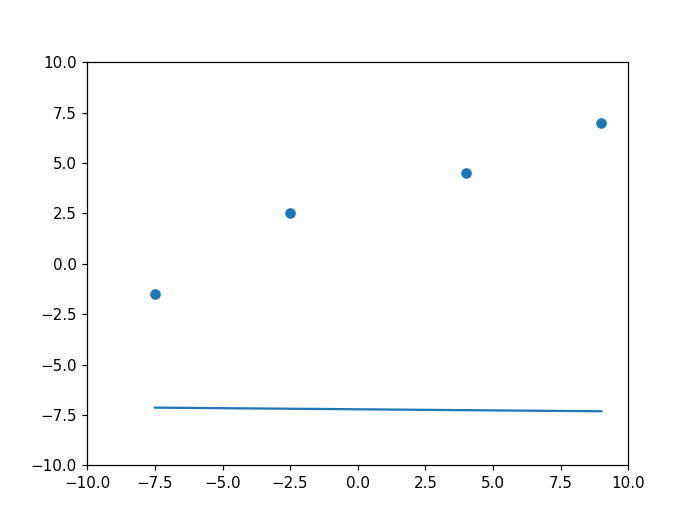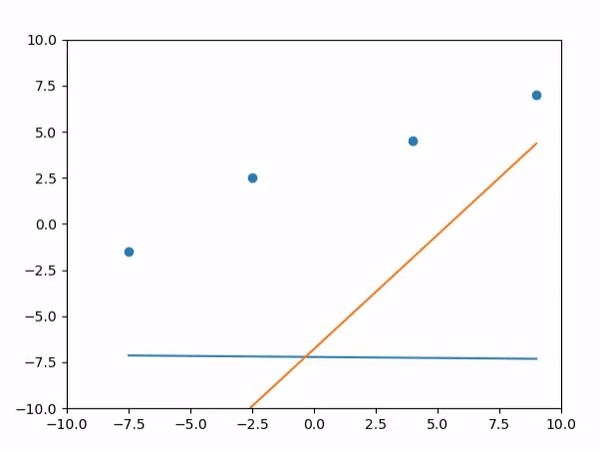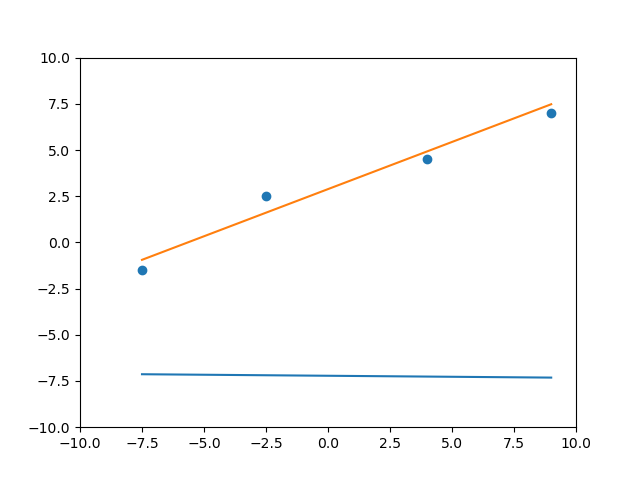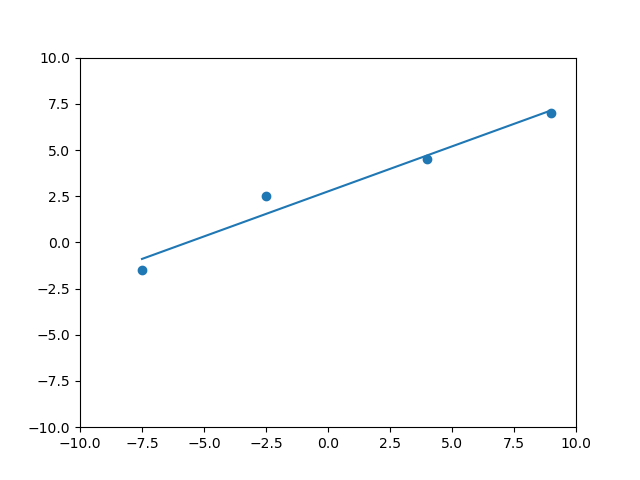Importing Library
import matplotlib.pyplot as plt #Creating Plots
import numpy as np #Working with numeric array
import random
import time
Misc
%matplotlib notebook #Makes Notebook zoom-able & resize-able
random.seed(61) #Generate same random numbers on multiple executions
Generating Dataset
x_data = np.array([-7.5,-2.5,4,9]) #Input data
y_data = np.array([-1.5,2.5,4.5,7]) #Output data
Defining model
def run_model(x):
global m,c #Making Variable Global for Simplicity
y = m*x + c #Predicting value(Output)
return y #Returning prediction
Define intial Value of parametrs
m = random.uniform(-1,1) #Random slope, Dosen't really matter
c = random.uniform(-10,-5) #Random intercept
Makeing intial prediction
y_init = run_model(x_data) #Prediction with randomly Generated m and c
Plotting Intial Model and Data

fig = plt.figure() #Create a new figure
plt.axis([-10, 10, -10, 10]) #Size of plot
plt.scatter(x_data,y_data) #Plotting data
plt.plot(x_data,y_init) #Plotting model
fig.canvas.draw() #Rendering plot

Defining Learn Rate and iterations/epochs
learn_rate = 0.01 #Rate of learning
iterations = 100 #Number of Epochs
Training Model

for i in range(iterations): #Loop to iterate
for x,t in zip(x_data,y_data): #Loop through data
y = run_model(x) #Making prediction
error = np.abs(t - y) #Error in prediction, Absolute difference of prediction and true value
m = m + learn_rate*error*x #Updating slope
c = c + learn_rate*error #Updating intercept
time.sleep(0.1) #Slowing down training, You can comment this out
y_next = run_model(x_data) #Prediction on Updated Model for Plotting
line, = plt.plot(x_data,y_next) #Plotting new model
fig.canvas.draw() #Rendering plot
line.remove() #Removing Model

Plotting Final Model

plt.plot(x_data,y_next) #Plotting final model
fig.canvas.draw() #Rendering plot
print(error,m,c) #Printing model parameters(slope and intercept)

Using scikit-learn library
Importing Library
from sklearn import linear_model
Generating and reshaping Dataset
x_data = np.array([-7.5,-2.5,4,9]).reshape([-1, 1])
y_data = np.array([-1.5,2.5,4.5,7]).reshape([-1, 1])
Loading Model
regr = linear_model.LinearRegression()
Training
regr.fit(x_data,y_data)
Making prediction
y_pred = regr.predict(x_data)
Plotting

fig = plt.figure()
plt.axis([-10, 10, -10, 10])
plt.scatter(x_data,y_data)
plt.plot(x_data,y_pred)
fig.canvas.draw()
